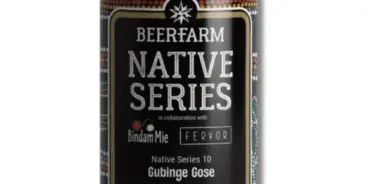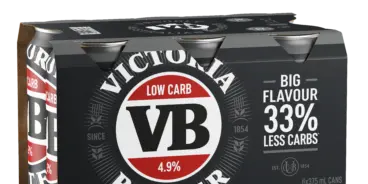
Coopers suffers first decline in 20 years
Coopers is caught in beer no man’s land as the battle to snare rapidly-changing tastes takes a heavy toll on Australia’s largest family-owned operation.
The 156-year-old company’s latest results, which revealed a 9.1 per cent fall in sales over the past financial year, again highlighted the business’s modern-day predicament.
Coopers isn’t large enough to be a true member of the internationally-backed Big Beer Club, which counts brands such as Carlton Draught, Tooheys and XXXX Gold as members. Coopers’ core range isn’t considered crafty enough for the new generation of drinkers who are flocking to hop bombs, flavoured sours and barrel-aged stouts.
Even managing director Dr Tim Cooper knows the brewery’s traditional standing has led to its beers being labelled an ‘old man’s drink’.
“We’re sort of caught in the crossfire,” Dr Cooper told Fairfax shortly after the announcement of the latest figures.
“You’ve got those at the bigger end being pretty aggressive and then at the other end you’ve got the plethora of craft brewers.”
And that means consumers are turning away from Coopers, which before this week’s announcement claimed 5 per cent of the Australian beer market.
While Coopers’ sales remained steady at home in South Australia, buyers across State borders have fallen away dramatically – and very quickly considering the brewery had enjoyed 24 consecutive years of sales growth. There was a 17.7 per cent fall in WA sales, a slip of 15.9 per cent in Victoria, while Queensland and New South Wales were each down by more than 11 per cent.
The company is moving swiftly to try to arrest the slump with Dr Cooper forecasting a 20 per cent jump in advertising and branding spend and an extra $3 million likely to be invested in new products in 2018-19.
Although Session Ale has gained traction in the market since its release 12 months ago and Coopers’ claims the flagship Pale Ale still holds a third of national sales in that style, punters have backed away from the Sparkling Ale, which drove the company for more than a century and a half.Coopers Dark Ale and Extra Stout have also shed volume.
Space for Coopers beers on shop shelves has shrunk and Brooklyn Lager’s transfer to Lion, which Coopers had brewed under licence for three years, also hasn’t helped the brewery’s plight.
It is too early to gauge the success of the Coopers Dry, which joined the stable two months ago but the low-carb, fine-filtered Lager isn’t the type of brew to appeal to craft beer aficionados who are now in the fastest growing segment of the industry, rising at almost 20 per cent a year.
Dan Murphy’s alone recorded a 15 per cent rise in craft beer sales in 2017.
In contrast, Euromonitor International data indicated mainstream beer sales fell 9 per cent between 2011 and 2016. And they continue to slide to the point whereby companies such as AB InBev (CUB), Asahi and Kirin (Lion) have either created their own craft beer brands or bought them, with Pirate Life, 4 Pines, Byron Bay and Mountain Goat in that mix.
Coopers has not flagged any job cuts as a result of the sales fall but it is significant that another SA-based brewery, West End, excised 36 jobs last month. Another of the Lion stable, XXXX in Brisbane, shed 25 jobs – a quarter of its workforce – at the same time. The level of craft beer sales was among the reasons for the axings.
In an attempt to be more appealing to the modern drinking audience powering the craft beer surge, predominately 18-39-year-olds, Coopers released a new commercial depicting young adults enjoying the brewery’s core range.
However, the constant turnover of beers from smaller, independent breweries, with new releases coming onto the market weekly is a key part of the rise in craft sales. Producing more seasonal beers is a game Coopers will now have to consider playing.
Brews News understands a new Coopers beer could be announced in the coming weeks.
The lack of variety from Coopers was a hot social media topic this week, epitomised by one Facebook post on the Perth Beer Snobs forum.
One contributorsummed up the situation.
“It’s just their beer isn’t particularly interesting. I like their stout… I’ll get a longneck every six months but that’s it. Now if they could dry hop the heck out of Sparkling they may be onto something.”
The move of Pale Ale and Session Ale into cans, which are more popular in the younger demographic, is also aimed at increasing appeal.
There was some writing on the wall that Coopers was hitting strong business headwinds last year when, despite a 2.9 per cent rise in sales to a record 84 million litres, Dr Cooper identified falling draught deals – attributed to the rise of independent breweries – as a major concern.
Coopers attempted a positive spin in the latest results by declaring a 4 per cent increase in profit for the 2017-18 year. But the figure was achieved through a new $65 million maltings plant, effectively a separate business recently bolted on to the company.
There have been plenty of challenges for the brand since Thomas Cooper produced his first batch of Ale in 1862.
It has lived through the rise of Lager in the early 20th century, droughts, a couple of World Wars and two recent troubles that left Dr Tim Cooper in doubt he would continue in the family tradition.
A rise in excise by the Whitlam Government, coupled with debt taken on to modernise the Adelaide plant, almost sent Coopers to the wall in the late 1970s and early 1980s. It took a decision to sell keg beer for the first time in 1983 to give the company tap points at home and, crucially, interstate to boost its bottom line.
Finally, Coopers’ expertise in producing homebrew kits and supplies has enabled the business to battle through the early 1990s recession “we had to have”. And 17 per cent interest rates. More drinkers making their own beer with Coopers supplies helped the brewery survive when others like Hahn folded.
The latest downturn will again require a change in Coopers’ business approach.



